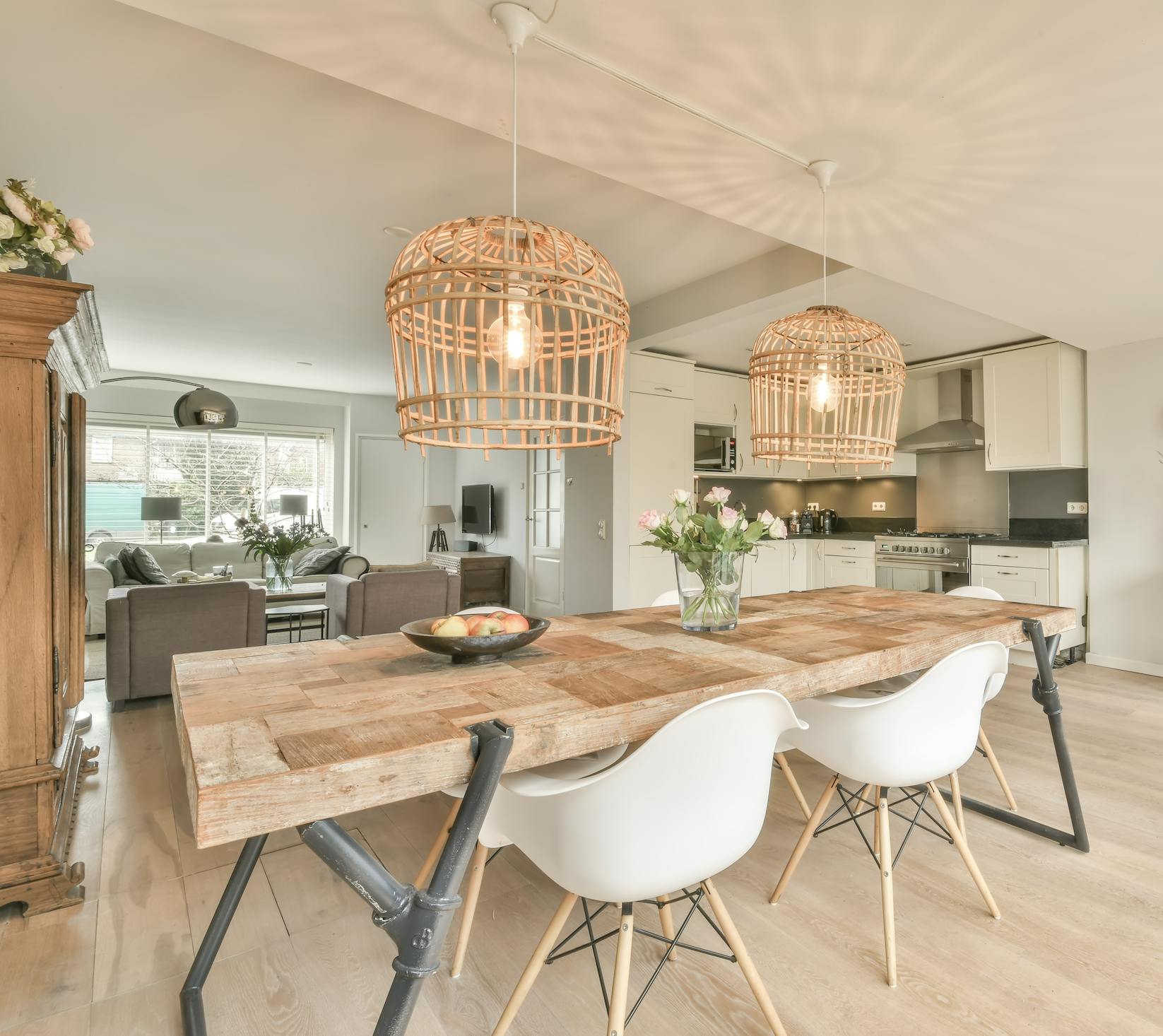Is it worth upgrading lighting?
Refreshed light fixtures and bulbs can make a big impact on the impressions of buyers.
“When most people think of decorating their home, they tend to focus on furniture and finishes. In reality though, lighting is an integral component of design and can absolutely make a difference when it’s time to sell,” explains Jeannie Do, a member of the International Group with RE/MAX Professionals in Lakewood, Colorado, who holds a BFA degree in Interior Design and spent 10 years designing luxury homes and commercial spaces.
“A bright room filled with natural light feels vastly different than a dimly lit room, but both can be appropriate in the right setting,” she continues. “We can use light to control the way a space visually expands and contracts. Bright light helps a space feel larger and cleaner in some circumstances, whereas dim light makes the space recede, feel more intimate, and can also be used to hide things. As a real estate agent, I use these principles to manage my potential buyers' showing experience.”

Do quips that she knows a home tour is off to a good start when the prospective buyers admire the brightness of a space right away.
“When a home is well lit, buyers see it as a fresh canvas and they're able to imagine all the possibilities. That's why we always ask sellers to open the blinds and turn on all the lights ahead of showings,” she says.
“As those buyers venture deeper into the home, it's okay for certain areas to appear moodier so we can push the perception of a retreat. For example, a primary bathroom suite with a large tub is a great place where we can use dim lighting to evoke a spa-like image.”
Lighting can also help a home seem more updated. For example, if the buyers walk into the bathroom and see dated vanity lights, they may question how well other areas of the home are maintained.
“I liken updating a room but not addressing lighting akin to wearing a five-piece suit with flip flops,” Do says. “The look is almost there, but something is off.”
Many homeowners may have never considered the coloring of their light bulbs. The shades are typically listed on the packaging, described in ways like “natural daylight” or “warm white.”
“The temperature of a light is measured by Kelvin degrees. For residential homes, I would recommend bulbs between 3,000-4,000K,” Do explains. “Any lower and it can get too warm. Any higher, it can be too cold and make your home feel sterile, like a science lab.”
Be strategic in merging function and design
In addition to the brightness of a bulb, the style of a light fixture can also play an important role in staging a home for sale.
Do advises sellers to be cognizant of their home décor – and the look they’re trying to achieve – when selecting elements to incorporate.
“Nowadays, we’re seeing people return to the familiarity of neo-classicism or transitional design – and midcentury modern is still immensely popular,” she says. “While some design movements are more forgiving when it comes to combining styles, others are not. We wouldn't want to put a heavily industrial light fixture into an organic modern home. Organic modern is about bringing lightness and natural textures into the space, and an industrial fixture with heavy metal detail could look out of place and detract attention from the other parts of the room we're trying to highlight.”
Examples of fixtures that may benefit from an update include pendants over a kitchen island, additional recess lighting, a contemporary lit ceiling fan (with a remote or wall-mounted control), floor and table lamps throughout, and more. For a dining area, taller ceilings may call for a pendant light (think metal or rattan), whereas lower ceilings may work better with a flush lighting fixture to optimize space.

Do reminds homeowners and home sellers alike to think about the three components of well-rounded lighting design: ambient, task, and accent.
“Ambient lighting is going to be diffused and illuminate a space in a uniform blanket of light that dictates the room’s mood. Task lighting is just as it sounds – it's a secondary, slightly brighter layer to help you achieve a specific task. Think about under-cabinet lights to illuminate your kitchen counter when you're cooking, or a table lamp to help you read your book in the evening,” she says.
Accent lighting isn’t used as commonly, but in certain areas it can help set a mood, Do says.
“Accent lighting is what you use to highlight something special about the room. It could be a wall sconce to light up your artwork, or lighting inside a cabinet to draw attention to the decor you have inside. We are calling for the viewer's attention, and bright accent lighting tends to create an interesting contrast.”
Exterior lighting also contributes to a home's aesthetic. Swapping sconce fixtures on the front of a home – often on either side of the front door and/or garage doors – for a sophisticated, modern look can elevate curb appeal during the daytime and at night.
Meet the needs of the modern buyer
When preparing a home to hit the market, sellers may want to consider how buyers could use each space – and stage accordingly.
For example, the COVID-19 pandemic jumpstarted remote work for many, promoting the urgent need for home offices. Though some people have returned back to the office, many employees still work remote or have adopted a hybrid work schedule. This specific use is still a priority for plenty of homebuyers – and therefore, if your home has a workspace, it’s imperative to think about the impact of lighting.
“With the high number of people now working from home, buyers are considering how the lighting changes in their house during the workday,” Do says. “Ask yourself, ‘Is the lighting in the office too dim for a video conference call?’”
According to the 2023 RE/MAX Future of Real Estate Report, many people – particularly homebuyers from younger generations – are seeking out dedicated workspaces with adequate natural light. This was especially true in cities, where 79% of respondents said natural light is an important factor when looking at homes.
Knowing this, sellers with a home office (or a guest room that serves multiple purposes) may want to optimize natural light though small adjustments like switching to brighter bulbs overhead or staging with a statement lamp. The result is a better illustration of how the ambiance might aid productivity.
Other things to consider
Unless your house is being sold as furnished, most items inside will come with you when you depart.
It's important to know the protocol for installed items, like a chandelier or special pendant light. If you have a light fixture in your home that you plan on taking with you when it’s time to move, it’s crucial to disclose it from the start. Talk with your trusted real estate agent about ensuring this in writing.
Ultimately, the quantity and quality of the lights throughout your home play a critical role in showcasing its best qualities to prospective buyers. When you’re ready to sell, connect with a local professional who has expert insights on the transaction – from staging to selling and everything in-between.

